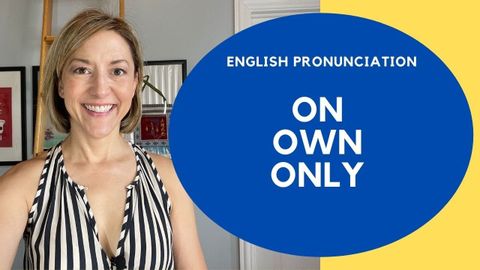好容易搞混!教你如何念 on、own、only! (How to Pronounce ON, OWN, ONLY - American English Pronunciation Lesson)
Summer 發佈於 2021 年 10 月 27 日  沒有此條件下的單字
沒有此條件下的單字US /səbˈskraɪb/
・
UK /səb'skraɪb/
US /prəˌnʌnsiˈeʃən/
・
UK /prəˌnʌnsiˈeɪʃn/
- n. (c./u.)發音;正確發音;發音方式;發音指南
- n.地點,處所;處於困境,陷入困境;點;少量,少許;斑點,污漬
- v.t.認出,發現
US /ˈsɛntəns/
・
UK /'sentəns/
